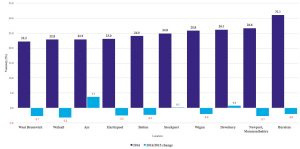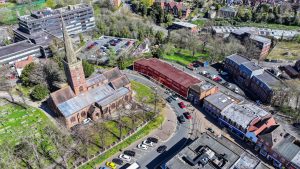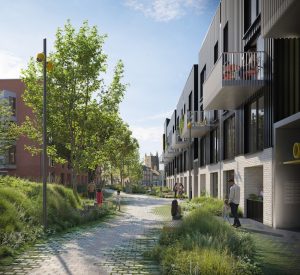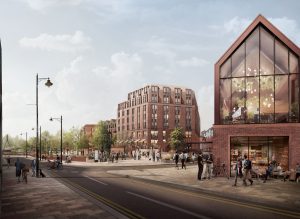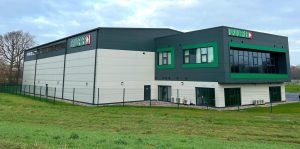Empty shops continue to blight West Midlands

Stoke-on-Trent and the Black Country remain amongst the worst places in the country for empty shops, a new report has revealed.
Burslem has the highest number of empty units of any town centre in the country, while both Walsall and West Bromwich feature in the top 10.
Property analyst LDC’s latest annual report (2016) on the UK’s retail and leisure trends shows how the run up to Brexit saw an increase in the number of shops closing – the situation reaching a peak at the time of the referendum in mid-2016.
The final quarter of the year, the most important for many retailers, however, saw more shops opening than closing and the positive trend has continued into 2017.
The report concludes that 2016 saw a net loss of 1,650 shops – which equates to just under five a day. The situation was not helped by a series of high profile administrations, notably BHS.
The report reveals:
• England has the lowest national vacancy rate at 11.0%, followed by Scotland at 11.9% and Wales at 15.2%. Of the three, only Wales is not showing consistent improvement.
• Of the English regions, the North West has the highest vacancy rate at 15.3% whilst London has the lowest at 7.4%
• Retail Parks have gained more occupied units, net (+314) than any other type of location yet contain only one in 40 stores in the country, whilst stand-alone/fringe location retail saw the greatest net loss of stores at -1,603
• Shopping Centres continue to improve most in vacancy (14.8% against 13.2%) followed by Retail Parks (6.6% – 5.7%) and Town Centres (11.7% – 11.2%).
• Large Centres (400+ units) have the highest vacancy rate at 12.1%, followed by Medium Centres (200-399 units) at 10.7% and Small Centres (<200 units) at 8.6%.
• The region with the highest proportion of shops that have been empty for more than five years (persistent vacancy) is the North West at 3.5%, whilst Greater London sits at just 1%
• Wigan, Dewsbury, Newport (Monmouthsire) and Burslem all have one in four shops lying empty, equating to vacancy rates of more than 25%.
• The top 75 multiple (chains) fascia opened 6,838 stores in 2016 yet the overall number of multiples’ outlets fell by a net -2,481 outlets.
• Greater London was not the only region to see a rise in Business Rates valuations, so did the South East and East Midlands. It was also one of 18 counties that saw a rise. However, the devil is in the detail: on a town by town basis London was not even in the top 30 of the list – Southwold, with its 170% increase was. Market Harborough in the East Midlands has increases of more than 50% in 199 premises matched to the LDC database.
• Food & beverage chains and independent leisure operators have driven significant growth across the year, gaining 816 outlets net, with Coffee Shops topping the multiples’ table and personal services such as Barbers heading the independents’ league with 482 net openings.
Matthew Hopkinson, of LDC, said: “It was clear at the halfway stage in 2016 that both openings and closures had slowed sharply by the date of the EU referendum vote. Openings had dropped off even more rapidly and that key measure, the gap between the two, had generated a net loss of nearly 2,000 retail operations in the six months to the summer.
“In a year of surprises, what followed was a bump after the slump. Both openings and closures rose back to early-year levels in the autumn, but this time openings had the upper hand and began to correct the net losses of the mid-year trough. It was not enough to fill the gap, but by Christmas it had begun to repair the damage.
“Turning to vacancy rates he said: “The gradual inching-down of the headline LDC vacancy rate which began in 2012 came to a halt in the middle of the year. This eventually began to show improvement as 2016 ended and that downward trend has been re-established in the early months of 2017.”

